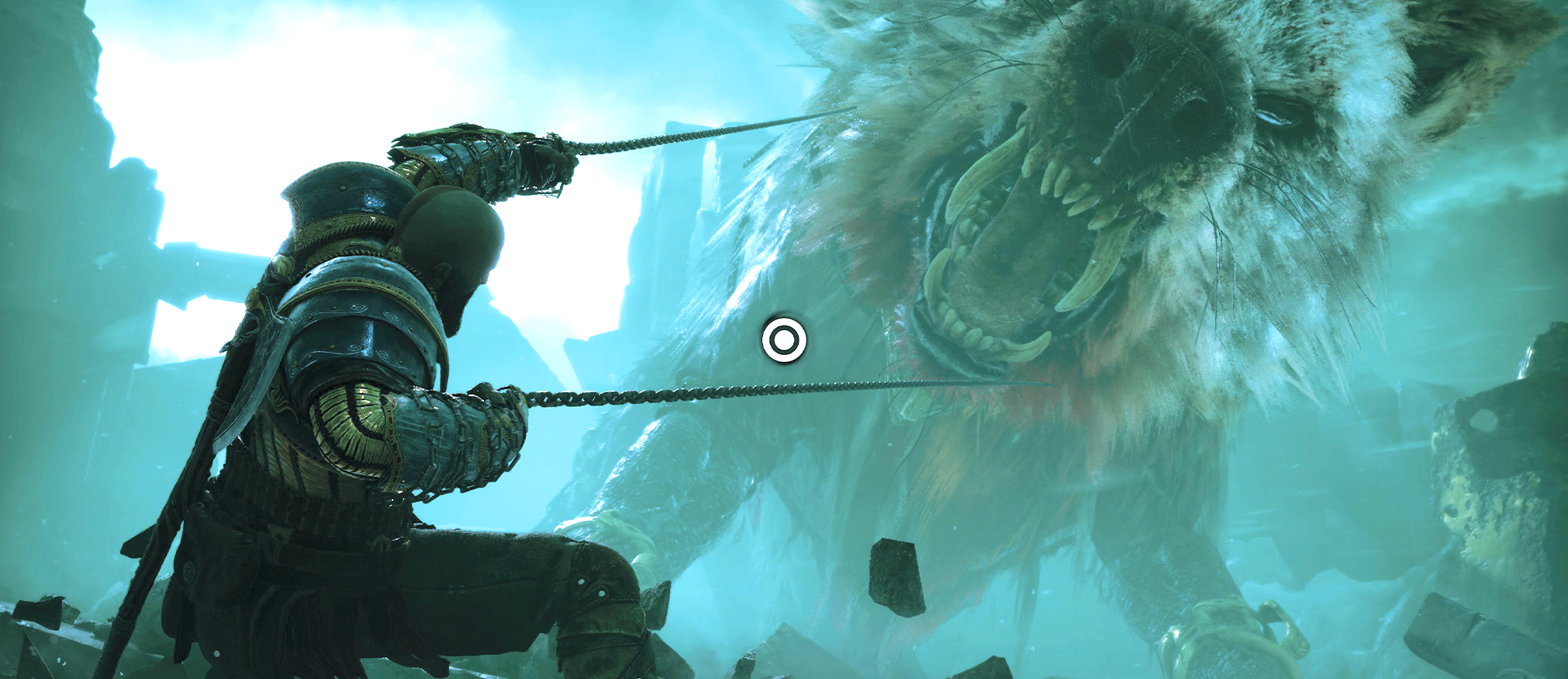Our Verdict
God Of War: Ragnarök is one of the most finely crafted adventures we’ve ever played, mixing thrilling combat with fab storytelling. If you own a PS5 and need one of the best games of 2022 then you owe it to yourself to play God Of War: Ragnarök on PS5.
For
- A visual showcase on PS5 and PS4
- Exceptional storytelling
- Fantastic combat design
Against
- Not a completely new approach
Why you can trust Creative Bloq
God Of War: Ragnarök may also be available on PS4, but this game shows why you need a PS5 in 2022 and beyond. Frost courses through Kratos’ Leviathan Axe as its sliced through an enemy skull, then hurled at a foe across the combat arena. Sprinting, I tap Circle on the DualSense controller to lash the Blades Of Chaos to a grapple point, propel over, and crash down with a smash. Summoning the axe Kratos spins through surrounding enemies as Atreus rains down arrow fire. Weapons pulsing, the blades are set alight, spinning to clear out more enemies. God Of War: Ragnarök is a bloody great time where you carve your own path to the goal.
Clearly God Of War: Ragnarök is not a revolution. Rather, it’s a refinement and very much a direct follow-up to 2018’s soft reboot. But this remains one of the reasons why you should get a PS5, read our PS5 review for exactly why Sony's console remains essential. Also, read our guide to the best games consoles for more choices. (God Of War Ragnarok has been nominated in the BAFTA Games Awards 2023.)
The story continues Kratos and Atreus’ journey through godhood in the harsh Norse pantheon, and both combat and exploration feel familiar – from punching chests to find gear, to slicing through enemy flesh, it’s like we never turned the console off at the end of the last quest.
While that does mean God Of War: Ragnarök isn’t a PS5 showstopper per se, it’s still a masterfully crafted experience, with more than a few surprises along the way to make it feel like a step forward, and one of the best PS5 games. This is a gorgeous game whether you’re playing on PS5 or PS4. PS5 can achieve 4K at either a steady 30fps or 40fps, or you can drop the resolution a tad for 60fps or higher with 120Hz sync (depending on your TV connection). The game defaults to favouring performance, and it’s a beautiful, slick way to play.
Being an extremely enhanced endgame of what was possible on PS4 isn’t necessarily a bad thing, and it feels just right for this follow-up. Blockbuster sequels can take so long to come out these days (five years in this case), that few developers seem willing to keep a good thing going. In some of its best moments, God Of War: Ragnarök calls to mind the likes of Final Doom, Tomb Raider Gold, or Persona 2: Eternal Punishment – in other words, the team at Santa Monica Studio have simply grown very good at using their in-house tools to build sublime levels to carve flesh and crunch loot in, and by Helheim they’re going to make them.
God Of War: Ragnarök takes its time
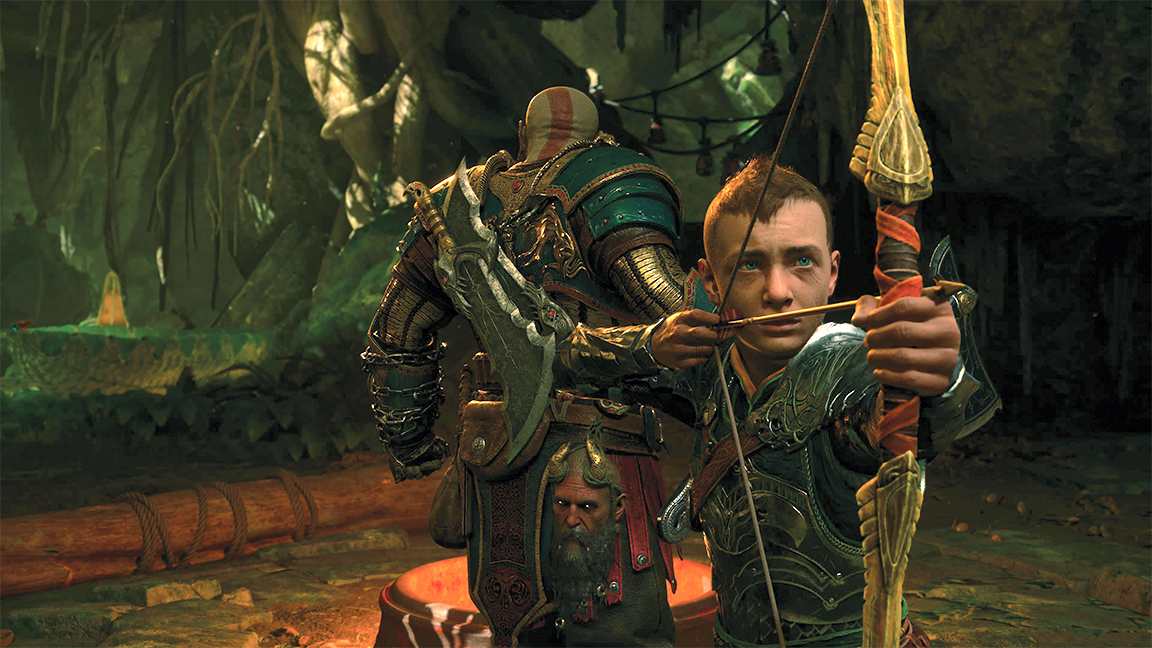
We join Kratos and Atreus years after we last saw them, surviving as best they can during Midgard’s harsh Fimbulwinter and lying low in their magically concealed cabin. The prophesied Ragnarök is on the way, and while their father/son relationship has matured (there’s nary a ‘boy!’ here), the two butt heads over what they should do about the coming cataclysm. Kratos wants to stay out of the way to protect his son, whereas Atreus wants to take fate into his own hands as he continues to come into his Jotun powers, full of teen confidence that they can set things right.
But they have a leatherbound laundry list of things that could do with setting right, meaning Odin’s noose (look it up) is only tightening around them. Vanir god Freya is out for their blood after the last game’s climax, as is Thor. They’re both hot on the trail of Kratos and Atreus, and while it takes a while for the wheels of fate to spin, the game starts in bombastic fashion as it rockets towards an inevitable climax (this ends the series’ Norse saga).
By the game’s end, the gods do clash, though God Of War: Ragnarök's structure can sometimes feel less focused than the specific ‘reach the tallest mountain in the realms’ goal of the first game. What results is a lengthy journey across the realms to find answers, and allies, to face the coming pantheocalypse.
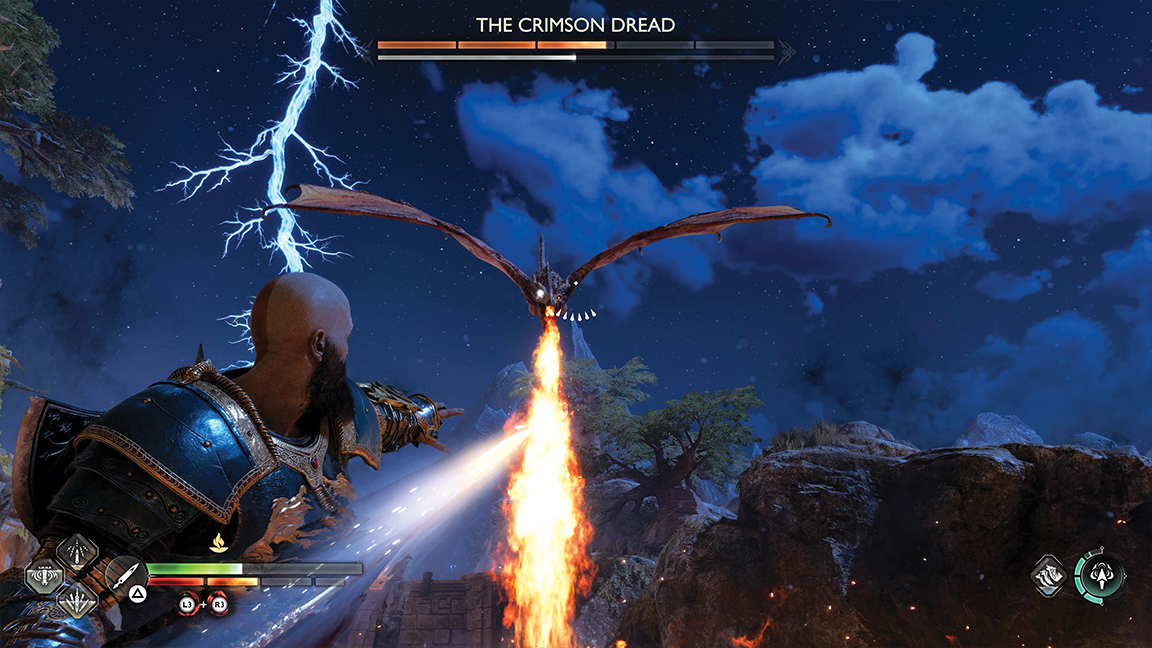
God Of War: Ragnarök wastes no time in showing you the threats snapping at the pair’s heels. Quickly picking up from last game’s tease of what lay ahead, Thor pays them a visit at home with Odin in tow.
Every character in God Of War: Ragnarök has depth, from the small to the large players. Just for a start, Ryan Hurst’s stacked Thor is intimidating and reserved in equal measure, carrying himself with the confidence you’d expect of one of the strongest gods in the Nine Realms, and always looking for an excuse to prove his might. Richard Schiff’s Odin is a revelation; an antithesis to Thor and Kratos, he oozes an easy-going charisma that slips into cult leader-like rhetoric, which feels like a perfect choice for the head of a pantheon.
While a tussle of ice versus lightning ensues in spectacular fashion, showing a commitment to truly large-scale clashes with plenty of impact (when you mistime a dodge and Thor knocks you across the stage into a pillar, boy do you feel it), Thor and Odin are far from one-and-done bosses; the story never quite goes where you expect from this opening, twisting and turning delightfully throughout its lengthy runtime.
The members of the large supporting cast are great anchors throughout the long journey through the realms, each stage of the adventure spotlighting characters as you spend time with them. Few of the players here are thinly sketched, and all come together to paint a vibrant world with a history all its own. Whether it’s Danielle Bisutti’s pained and complex Freya or Adam John Harrington’s fantastic turn as Sindri, tugging on the heartstrings as he tries to juggle what’s best for his friends, most of the cast get some time to worm their way into your heart – even those you may take to be smaller players at first are given room to endear themselves to you.
A few do get the short end of the stick – that’s perhaps unavoidable in a game this ambitious – and more could be done to dig into the plight of the common folk across the lands, who are otherwise mostly voiceless (a populated Dwarven settlement is quickly vacated as an alarm sounds as soon as you arrive, for instance).
Of course, Christopher Judge and Sunny Suljic steal the show as Kratos and Atreus, whose father-son chemistry is off the charts. Judge packs nuance into every intonation and eye twitch, and plays the straight man to Wonderful effect (what’s funnier than a well-timed, perfectly intoned ‘no’?). Seeing the growth of Suljic as an actor is terrific, as he’s the true heart of God Of War: Ragnarök, and is given a complex role to match. Ultimately this is his story more than Kratos’, who’s here to support his son, and to grapple with what keeping him safe and helping him to flourish ultimately means.
God Of War: Ragnarök is all about the boy
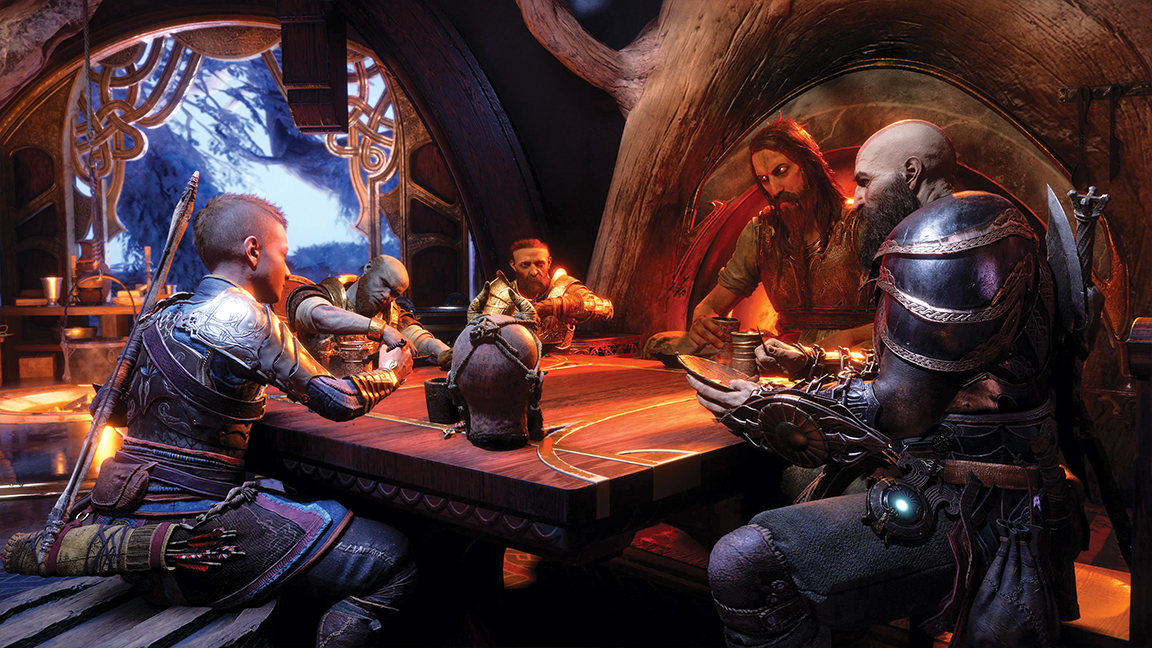
Yet flourish Atreus does, even without the big man around. While Kratos’ violent combat is still the backbone of God Of War: Ragnarök, Atreus comes into his own as a playable character, striking out alone as the situation demands (and sometimes to his father’s chagrin). While the tussling is from the same mould as Kratos’, enemies and combat arenas being built the same, his focus on ranged combat rather than melee makes for a flow that feels different and more mobile.
When he dodges his rolls are bigger, and his R3 finishing moves often involve flips or knock-backs to create distance. In addition to the special arrows he has on cooldown even when commanded by Kratos (with Square pressed when you’re playing as the hulking Greek legend), Atreus can also fire regular arrows with R1, though both can be charged up. His skill trees aren’t as fully featured as Kratos’ (you play as him less), but they do evolve. His sequences provide some welcome variety, and a neat alternative perspective to the big man we all know and love.
Kratos, meanwhile, has more than a few new combat tricks up his sleeve (or other item of clothing, depending on the gear you equip). This is still some of the best over-the-shoulder melee action you’ll find, neatly adapting the gruff protagonist’s character action roots. You start out with both the Leviathan Axe and Blades Of Chaos, and it can seem almost overwhelming at first, even though he doesn’t retain skill upgrades between the games, but with more options for staying mobile, the axe and dual swords complement each other brilliantly.
Tossing the axe and recalling it to Kratos’ hand with w feels as satisfying as ever, allowing you to summon it and leap into the fray with heavy charged attacks. The blades, meanwhile, are suited to slashes and twirls, perfect for tackling groups, and the chains that join the dual swords together can attach to enemies either to draw them close or to allow Kratos to dash over towards them.
Weapons can also be used to navigate the combat arenas, allowing you to grapple instantly across gaps or up ledges even when they’re not equipped. You can quickly swap between weapons using the D-pad – hold the button down and you’ll come out swinging with an attack after the change.
God Of War: Ragnarök is still about the combat
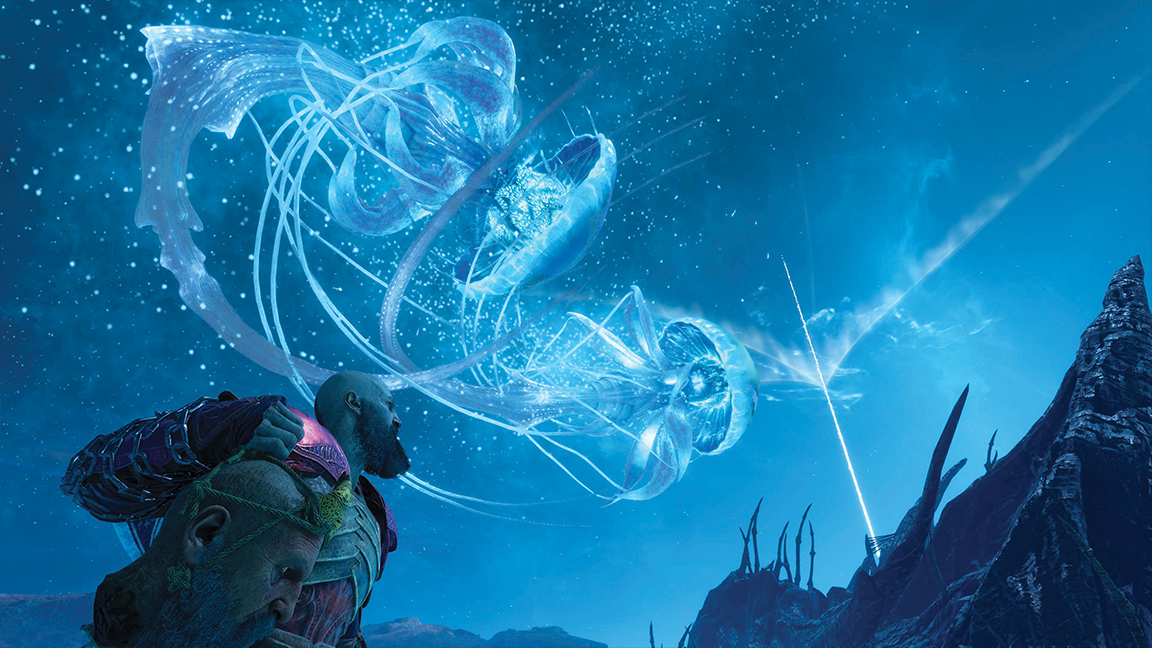
It all adds up to combat that rarely lets up, where you always have options for what to do next. Dodge attacks mean you can keep swinging whether you’re moving towards or away from foes. Signature moves are performed by holding down Triangle, which powers up the elemental possibilities of your weapons – the Blades Of Chaos’ move has you mashing it to swirl them rapidly in front of you before cracking them like a whip, and the Leviathan Axe’s stores a large charge attack (which can be cumbersome during a hectic battle).
Combos are rewarded with the ability to temporarily power up your weapons, a neat trick that complements Kratos’ Spartan Rages (which now include the likes of heals and specialised beatdowns).
A new third weapon is added to Kratos’ arsenal partway through, and complements the others’ play styles. We won’t spoil what it is, but as it’s capable of making focused strikes and allows you to methodically plan follow-up attacks to activate later, it’s a powerful tool that enables Kratos to make the battlefield his bloody canvas while also controlling legions of enemies. Use a skill enough and you can customise it, spending a smidgen of XP to tweak an icy floor smash to have, for example, increased stun damage or frost buildup.
You’re never off the offensive for long. Kratos’ shields have been overhauled, so you can customise roundels with special effects (as with other gear), and also exchange the Guardian Shield for other variants, like a hulking Tower Shield that soaks damage if parrying with o isn’t your thing (though it’s delightfully crunchy and rhythmic to do so no matter the enemy size – Kratos can always go blow for blow). How Kratos rips bloody is in your hands, and everything can be tailored to play how you like, be that buffs from gear or the skills you use.
God Of War: Ragnarök nails its creature design
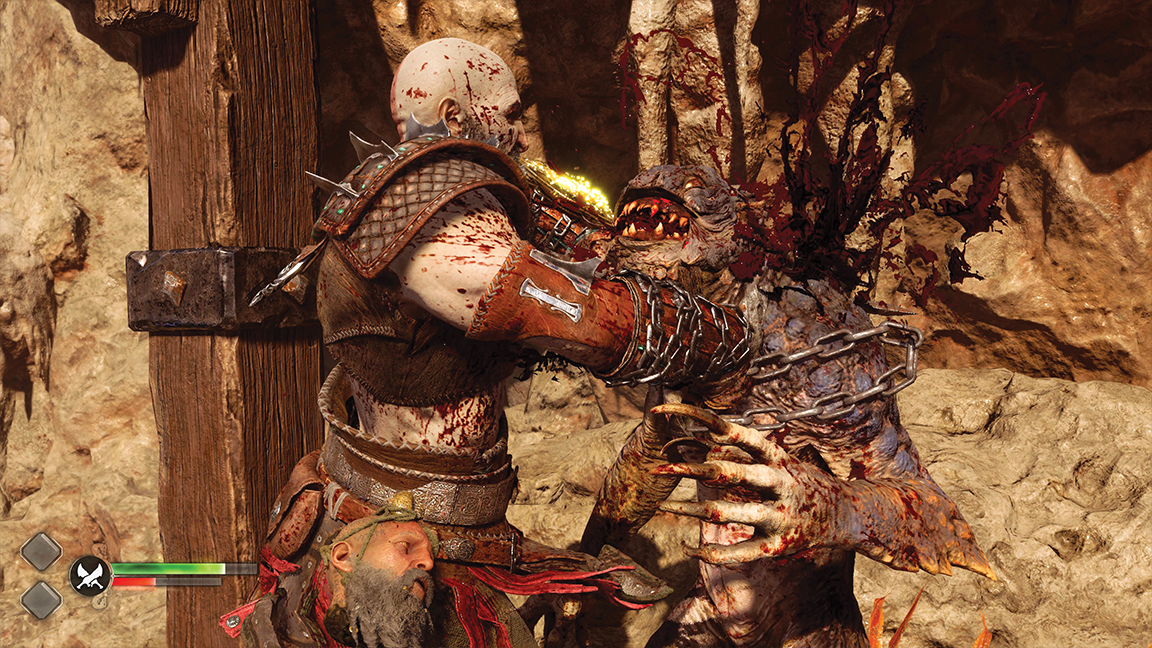
The enemies taking those blows come in all shapes and sizes. The nine realms are now populated by a greater variety of foes – in fact, trolls, while present, are very few and far between. Often you’ll need to identify particular behaviours to deal with them efficiently, starting with little frog creatures who can stick to a wall and spew poison before you knock them off, through to Asgardian soldiers who can perform their own dodges and strike you with bifrost – a new element that deals chip damage which restores if you avoid taking a second hit.
The realms, too, are varied, and you do venture across all nine. Some are host to smaller adventures than others, but none are home solely to the likes of challenges rooms, even if some do start out that way. Returning realms have been overhauled; while you do briefly revisit the Light Temple in Alfheim, much of the area ripe for exploration is the arid deserts that lie beyond it, where the dark elves plan their resistance in caves.
This desert region is home to plentiful side missions and collectibles to discover. Unlike the first game, where the Lake Of The Nine played sole host to many of the side activities, here many realms feature hubs that are no less impressive and dense with things to do, often extending adventures with key companions in ways that feel meaningful. They can sometimes feel like full-blown levels or dungeons. Some of the biggest moments of spectacle come from these, from facing down a fiery dragon to freeing trapped behemoths (it’s not all murder – there are some really sweet moments).
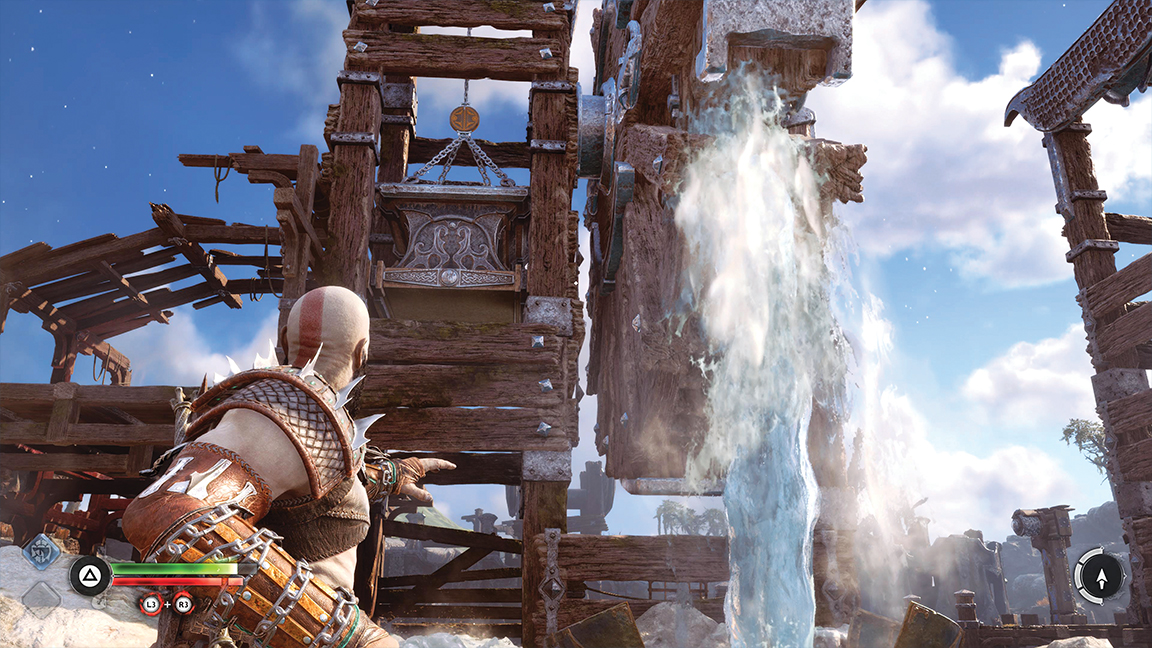
There’s a definite blurring of the line between what’s optional and what’s mandatory thanks to the high degree of polish. While there’s the occasional ‘find x’ or ‘clear camps’ side objective, the bulk of the side content feels just as well-designed as that on the main path. Sometimes more so, as some of the environmental challenges can push you a little harder if you have the option to walk away. In our playthrough, one massive hub area, absolutely packed with things to do, opened up through an innocuous side-quest right near the end of the game.
Even when on the main quest, almost every diversion to a chest feels like it has purpose, often rewarding you for going the extra mile while nosing around an environment or playing with a puzzle.
A significant number of them trigger dialogue. Kratos, for instance, takes the moment to ask Mimir’s opinion on something when Atreus is briefly out of earshot while you swing around on a crane, leading us to think ‘Perhaps this was the main way to go after all?’ But it isn’t, it’s just that no matter where you go or what you do, everything is made to matter, from the large story beats to your own adventure. It’s the journey, not the destination, that’s important.
If you're impressed by God Of War: Ragnarök then take a look at our guide to the best upcoming PS5 games for more like this. Likewise, you'll one of the best PS5 controllers, which includes a God Of War: Ragnarök design, to get the most from a PS5 game like this one.
This article first appeared in Play Magazine issue 21. You can subscribe to the print edition, digital version, or save even more with the print/digital bundle – whatever you choose, you’ll be receiving an unprecedented trove of dedicated PlayStation coverage every month.
Read more:

Thank you for reading 5 articles this month* Join now for unlimited access
Enjoy your first month for just £1 / $1 / €1
*Read 5 free articles per month without a subscription

Join now for unlimited access
Try first month for just £1 / $1 / €1
out of 10
God Of War: Ragnarök is one of the most finely crafted adventures we’ve ever played, mixing thrilling combat with fab storytelling. If you own a PS5 and need one of the best games of 2022 then you owe it to yourself to play God Of War: Ragnarök on PS5.

Games Editor on GamesRadar+ and former PLAY editor, Oscar Taylor-Kent first joined Official PlayStation Magazine in 2018, and was involved with the long-standing mag’s rebrand into PLAY before becoming editor. Despite being a PlayStation expert (and noted PS Vita apologist), he’s got fingers on many buttons, having also written for SFX, PC Gamer, Kotaku, Waypoint, Official Xbox Magazine, GamesMaster, PCGamesN, and Xbox to name but a few. When not knee deep in character action games, JRPGs, and visual novels, he’s often found reading books, manga, or binging anime. His current favourite games include Devil May Cry, Persona, Ace Attorney, and Hakuoki.
- Ian DeanEditor, Digital Arts & 3D

